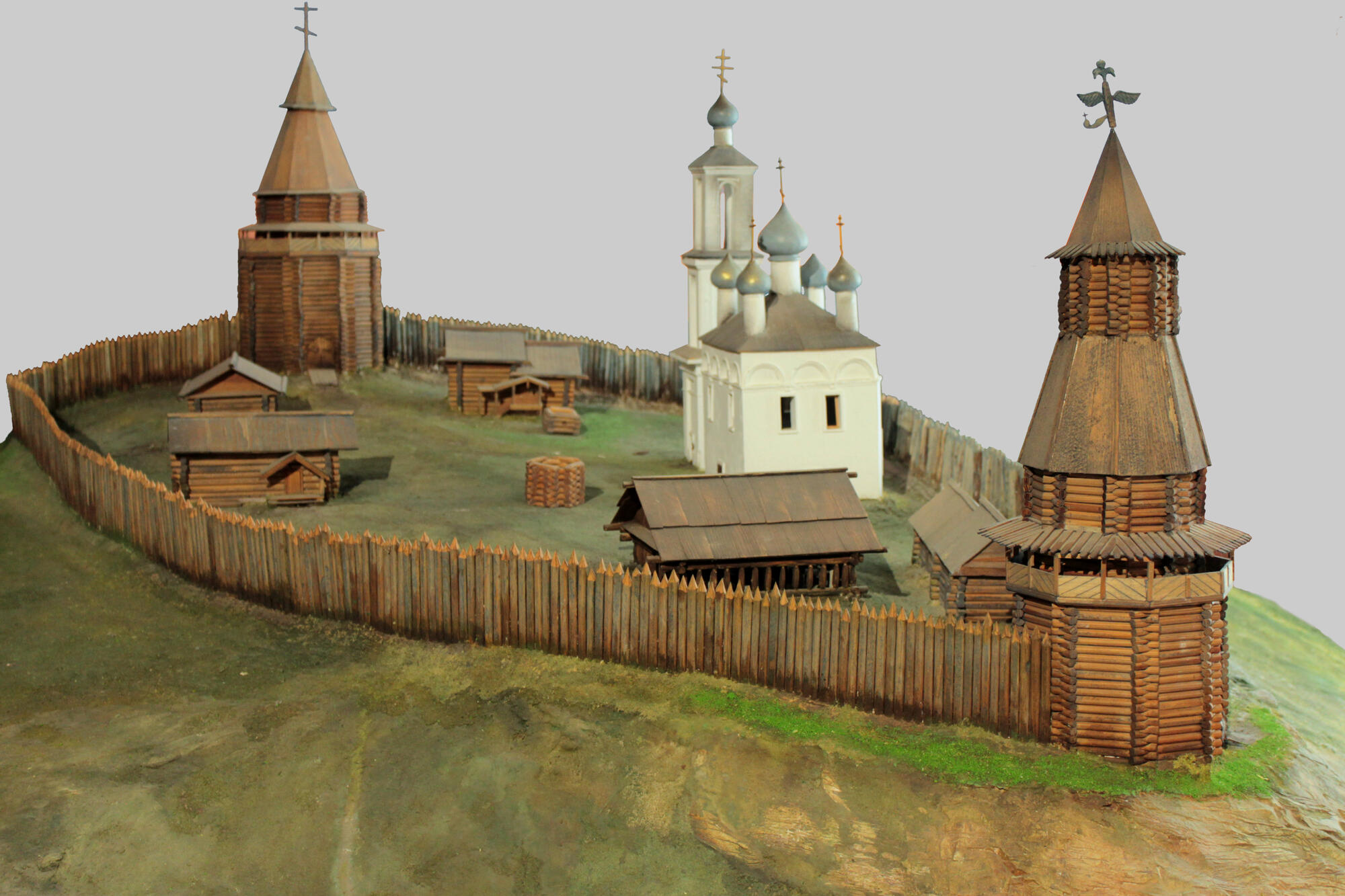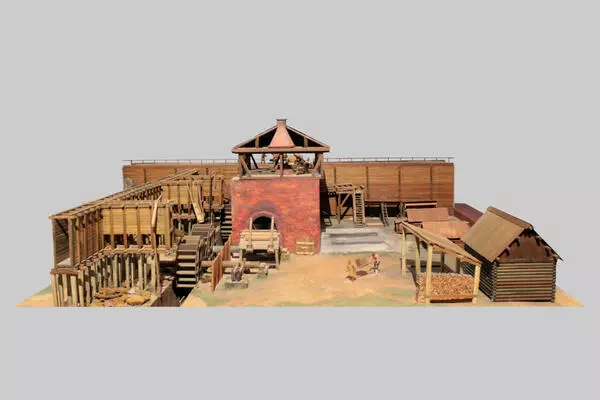Researchers point out that in 1573 the Bashkirs turned to the tsar with a request to build a city, ‘not only for the purpose of paying their yasak (a tax) as inside their dwellings would be more preferential, but so that they would also have shelter and protection from enemies.’ In 1574, a detachment of the Moscow archers of the voivode Ivan Nagoi laid the foundation of the Imen-Kala oak Kremlin, as the neighboring Bashkirs called it, which became the supporting center of the future city. The Kremlin occupied the southern end of the cape at the confluence of the Sukoloka (Sutoloka) river into the Belaya river. Inside the fortress, the archers built the governor’s house, an order hut, powder magazines and grain warehouses, as well as a wooden church of the Kazan Mother of God.
A few years later, the church burned down, and at the beginning of the 17th century the Smolensk stone cathedral was erected, which was the cathedral of Ufa until the middle of the 19th century.
According to historians, Ivan Nagoya is considered the first voivode, but there is no documentary evidence of this. Therefore, Mikhail Nagoi, who replaced him, is considered the first. The voivode headed the main administrative institution of the city — the Ufa clerk hut, he also had a garrison army of 150-200 archers under his command.
According to historians, Ivan Nagoya is considered the first voivode, but there is no documentary evidence of this. Therefore, Mikhail Nagoi, who replaced him, is considered the first. The voivode headed the main administrative institution of the city — the Ufa clerk hut, he also had a garrison army of 150-200 archers under his command.
With the construction of the city walls and the emergence of a settlement (a commercial and industrial part adjacent to the fortress) the fortification began to be called the Kremlin. Later, the Kremlin began to expand. Soon in the 17th century, the territory of the Kremlin grew with new walls, towers and other buildings.
The Ufa Kremlin was a broken quadrangle with walls 440 meters long. The walls were built of oak logs, buried vertically. The walls were protected by three towers, two of them were passable, with gates. The towers were two-tiered, octahedral. The northern one was called Mikhailovskaya, the southern one — Nikolskaya, the northeastern one — Naugolnaya. In the Mikhailovskaya tower there was a gate, in the Nikolskaya tower there was a gate for entering the posad (settlement) with an internal bend — a trap. The names of the towers were given by the names of the icons hanging there. In 1586, Ufa was mentioned in the category books as a new city. Ufa became the administrative center of Bashkiria. Management of the region was entrusted to the Ufa governor, subordinate to the Kazan governor. At the same time, Ufa acted as a center for collecting yasak, a tax, not only from the Bashkir population, but also from the peoples of Perm, Great and Western Siberia, who lived close to them.
The fire of 1759 became disastrous for the Kremlin, as well as for the whole city, which played an important role in changing the layout of Ufa. The fire broke out on May 23 from lightning hitting the Mikhailovskaya Tower of the Kremlin. From it, the fire spread to other nearby wooden buildings.
The Ufa Kremlin was a broken quadrangle with walls 440 meters long. The walls were built of oak logs, buried vertically. The walls were protected by three towers, two of them were passable, with gates. The towers were two-tiered, octahedral. The northern one was called Mikhailovskaya, the southern one — Nikolskaya, the northeastern one — Naugolnaya. In the Mikhailovskaya tower there was a gate, in the Nikolskaya tower there was a gate for entering the posad (settlement) with an internal bend — a trap. The names of the towers were given by the names of the icons hanging there. In 1586, Ufa was mentioned in the category books as a new city. Ufa became the administrative center of Bashkiria. Management of the region was entrusted to the Ufa governor, subordinate to the Kazan governor. At the same time, Ufa acted as a center for collecting yasak, a tax, not only from the Bashkir population, but also from the peoples of Perm, Great and Western Siberia, who lived close to them.
The fire of 1759 became disastrous for the Kremlin, as well as for the whole city, which played an important role in changing the layout of Ufa. The fire broke out on May 23 from lightning hitting the Mikhailovskaya Tower of the Kremlin. From it, the fire spread to other nearby wooden buildings.
The disaster was not limited to the Kremlin. It covered the streets of Malaya Repnaya Sloboda nearest to it, and even part of the walls of the large city. A total of 210 yards were burnt down.
After the fire, the Kremlin fortifications were not restored, since there was no longer need for them. The territory of the former Kremlin has become the administrative center of the city. And between it and the residential areas there was a zone free from building.
After the fire, the Kremlin fortifications were not restored, since there was no longer need for them. The territory of the former Kremlin has become the administrative center of the city. And between it and the residential areas there was a zone free from building.



